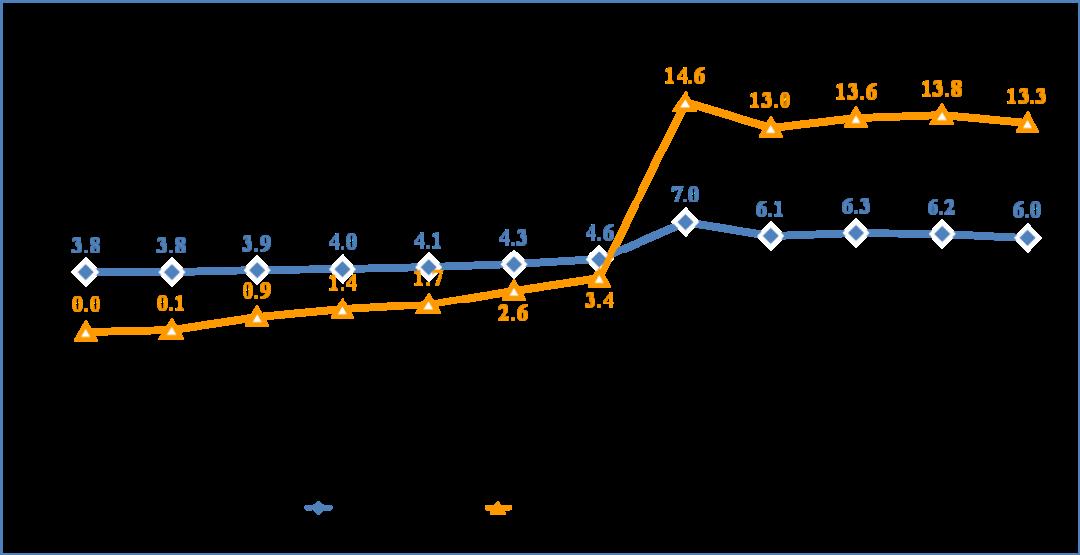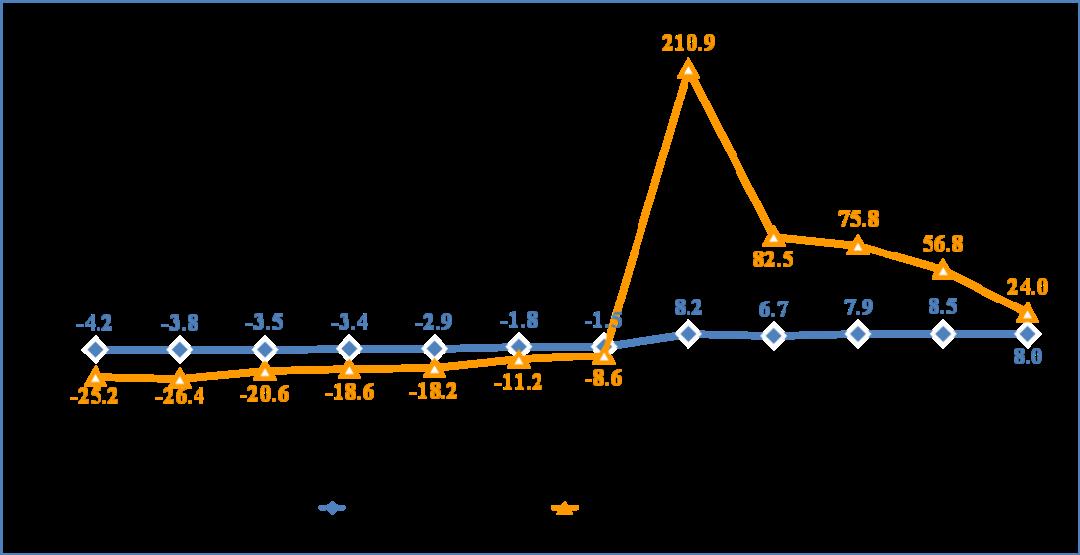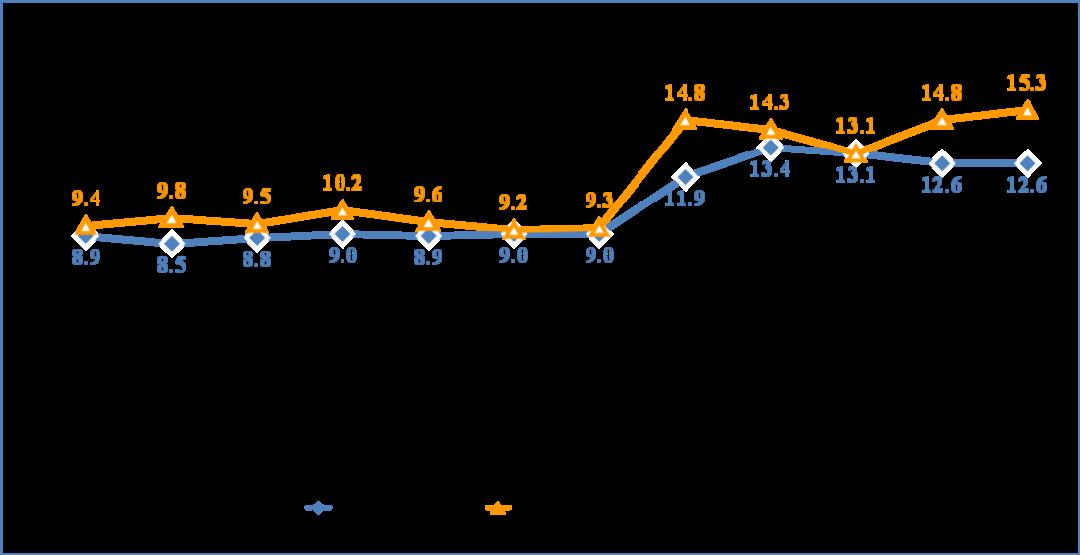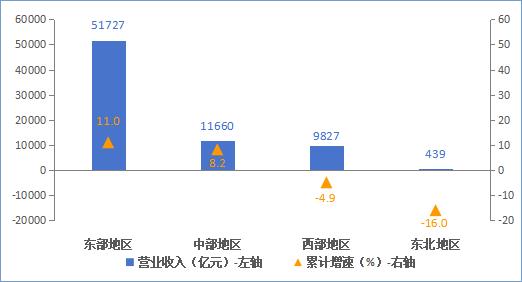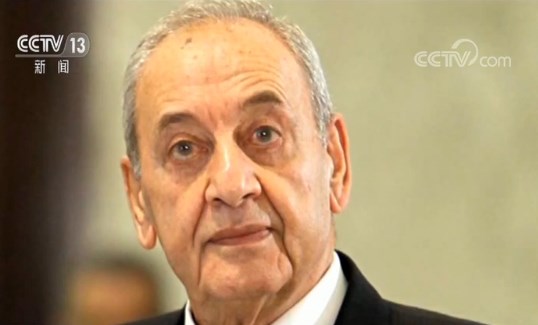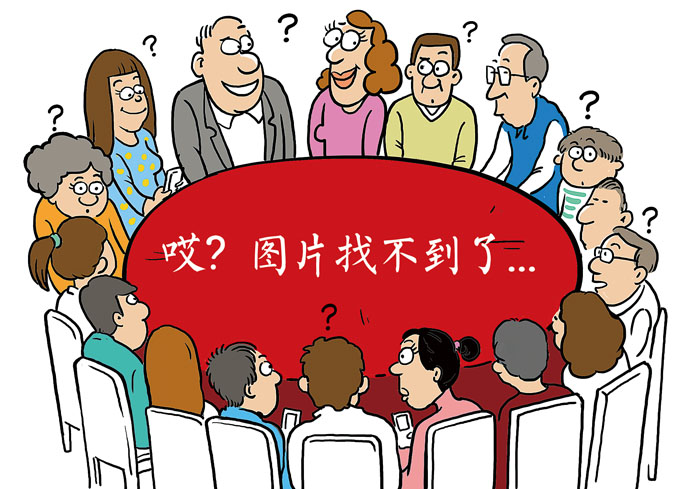Departments (bureaus) of human resources and social security of all provinces, autonomous regions and municipalities directly under the Central Government, Health Bureau (Health and Family Planning Commission), Civil Service Bureau, Human Resources and Social Security Bureau and Health Bureau of Xinjiang Production and Construction Corps, and personnel (cadre) departments of various ministries and commissions in the State Council:
In accordance with the requirements of the circular issued by the former Ministry of Health (Wei Tong [2012] No.23) on eight recommended health industry standards, such as the Quality Index of Routine Clinical Biochemical Examination, the Ministry of Human Resources and Social Security and the Health and Family Planning Commission have organized medical experts to revise the relevant contents of the Operation Manual for Civil Servant Employment Physical Examination (for Trial Implementation), which are hereby printed and distributed to you. This notice shall be implemented as of September 1, 2013. In the specific work, in case of problems, please timely feedback to the central civil service authorities and health (health and family planning) administrative departments.
Ministry of Human Resources and Social Security Health and Family Planning Commission Civil Service Bureau
August 19, 2013
Operation Manual of Civil Servant’s Employment Physical Examination (Trial).
Relevant revision contents
I "Article 2 Physical Examination Items and Operating Procedures 6.1 Blood Routine" is revised as:
6.1 Blood routine
It can provide clues for the diagnosis of hematological diseases. Among them, red blood cells, white blood cells and platelets are counted by instrument or microscope, and hemoglobin is counted by instrument or photoelectric colorimetry. Must check the project includes the following five items:
6.1.1 Total number of red blood cells (RBC)
[Reference value] Male: (4.3 ~ 5.8) × 1012/L; Female: (3.8 ~ 5.1) × 1012/L.
Erythropenia is more common in all kinds of anemia, such as acute or chronic aplastic anemia and iron deficiency anemia. Polycythemia is common in hypoxia, blood concentration, polycythemia vera and secondary polycythemia.
6.1.2 Hemoglobin (HGB)
[Reference value] Male: 130 ~ 175 g/L; Female: 115 ~ 150 g/L.
The clinical significance of decreasing or increasing hemoglobin is basically the same as the total number of red blood cells.
6.1.3 Total white blood cell count (WBC)
[Reference value] (3.5 ~ 9.5) × 109/L.
Physiological leukocytosis is common in strenuous exercise, after eating, pregnancy and so on. In addition, different blood collection sites can also make the number of white blood cells different, such as the average number of white blood cells in earlobe blood is higher than that in finger blood.
Pathological leukocytosis is common in acute suppurative infection, uremia, leukemia, tissue injury, acute bleeding and so on.
Pathological leukopenia is common in aplastic anemia, some infectious diseases, liver cirrhosis, hypersplenism, radiotherapy, chemotherapy, taking some drugs and so on.
6.1.4 Differential white blood cell count (DC)
[Reference value]
Neutrophils: (1.8 ~ 6.3) × 109/L (40% ~ 75%).
Eosinophil: (0.02 ~ 0.52) × 109/L (0.4% ~ 8%).
Basophil: (0.00 ~ 0.06) × 109/L (0 ~ 1%).
Lymphocyte: (1.1 ~ 3.2) × 109/L (20% ~ 50%).
Monocyte: (0.1 ~ 0.6) × 109/L (3% ~ 10%).
Neutrophilia is common in acute suppurative infection, massive hemorrhage, serious tissue injury, chronic myeloid leukemia, sleeping pill poisoning, etc. Reduce common viral infections, aplastic anemia, agranulocytosis, etc.
Eosinophilia is common in psoriasis, pemphigus, eczema, bronchial asthma, allergies, some hematological diseases and tumors, such as chronic myeloid leukemia, nasopharyngeal carcinoma, lung cancer and cervical cancer. Decrease is common in the early stage of typhoid fever and paratyphoid fever and after long-term use of adrenocortical hormone.
Basophilia is common in chronic myeloid leukemia with bone marrow fibrosis, chronic hemolysis and splenectomy. Reduction is generally of no clinical significance.
Lymphocytosis is common in infectious mononucleosis, tuberculosis, malaria, chronic lymphocytic leukemia, whooping cough, some viral infections, etc. Decrease is common in some leukemia or excessive destruction, such as long-term chemotherapy, X-ray irradiation and immune deficiency.
Monocytosis is common in monocytic leukemia, active tuberculosis, typhoid fever, malaria, etc. Reducing the clinical significance is not significant.
6.1.5 platelet count (PLT)
[reference value] (125 ~ 350) × 109/L.
Increased platelet count is more common in thrombocytosis, after splenectomy, acute infection, hemolysis, fracture, etc. Decrease is more common in aplastic anemia, acute leukemia, acute radiation sickness, primary or secondary thrombocytopenic purpura, hypersplenism, uremia, after taking some drugs, etc.
Two, the "second physical examination items and operating procedures 6.3 blood biochemistry" is revised as follows:
6.3 blood biochemistry
6.3.1 Diagnostic index of blood glucose (GLU) diabetes. Glucose oxidase method and automatic or semi-automatic biochemical analyzer should be used, and blood should be detected as soon as possible after blood collection.
[reference value] 3.9 ~ 6.1 mmol/L.
The blood glucose concentration of blood taken on an empty stomach for more than 8 hours is ≥7.0 mmol/L, or the blood glucose concentration of blood taken at any time of the day is ≥11.1 mmol/L, and it still reaches or exceeds this value after reexamination, so as to diagnose diabetes; The fasting blood glucose concentration is between 5.6 and 6.9 mmol/L, and further diagnosis should be made by oral glucose tolerance test (OGTT). If the 2-hour blood glucose concentration of OGTT is ≥11.1 mmol/L, diabetes is diagnosed.
6.3.2 Liver biochemical indexes of alanine aminotransferase (ALT) can be detected by automatic or semi-automatic biochemical analyzer by enzymatic method, which can be used for early diagnosis of hepatobiliary diseases such as viral hepatitis and help to judge the degree and prognosis of the disease.
[reference value] male: 9 ~ 50 u/l, female: 7 ~ 40 u/l.
6.3.3 Liver biochemical indexes of aspartate aminotransferase (AST), and the detection method and significance are the same as those of ALT.
[reference value] male: 15 ~ 40 u/l, female: 13 ~ 35 u/l.
ALT and AST are sensitive indicators reflecting the damage of liver cells, which can be increased in the incubation period and early onset of hepatitis, so it is helpful for early detection of hepatitis. ALT mainly exists in the cytoplasm of hepatocytes, while AST is distributed in the mitochondria of hepatocytes in addition to the cytoplasm. ALT and AST levels can be increased when liver cells are damaged by various liver diseases (such as viral hepatitis, drug-induced liver damage, fatty liver, cirrhosis, etc.) and some extrahepatic diseases.
When liver damage is mild, only ALT and AST in cytoplasm are released into blood, so the increase of ALT is greater than AST. It is generally believed that serum ALT exceeds the upper limit of reference value by more than 2 times, indicating that liver cells have inflammation, necrosis and liver damage. When severe liver injury occurs, mitochondria are destroyed, and a large amount of AST is released into the blood, resulting in a higher serum AST level than ALT. AST/ALT ratio > 1 can indicate the progress of hepatitis with significant hepatocyte necrosis. Therefore, measuring AST/ALT ratio is helpful to judge the severity of liver injury. The increase of single AST should also consider the pathological changes of myocardium and bones, especially the ratio of AST/ALT in myocardial infarction is often greater than 3, accompanied by corresponding clinical manifestations, so it is not difficult to diagnose.
In addition to the liver, other tissues such as heart, brain, kidney and muscle also contain ALT and AST, and the pathological changes of these organs can also cause the increase of serum ALT and AST. Changes in some physiological conditions can also cause the elevation of ALT and AST. For example, strenuous physical activity may cause a temporary slight elevation of ALT. Because there are various reasons for the increase of serum ALT and AST, it is necessary to make a clear diagnosis according to the specific situation and combined with other necessary examination methods.
6.3.4 Blood urea nitrogen (BUN) Blood urea nitrogen is the product of protein metabolism. The purpose of determining blood urea nitrogen is to judge the excretion ability of protein metabolites by the kidney, so the value of blood urea nitrogen can be used as an index to judge glomerular filtration function. However, blood urea nitrogen is easily influenced by diet, urine volume and other factors, so although it can be used as an index to judge glomerular function, it is not as accurate as blood creatinine. Blood urea nitrogen was detected by urease method.
[reference value] 2.8 ~ 7.2 mmol/L.
6.3.5 Serum creatinine (CR) is the product of human muscle metabolism, which is not easily influenced by diet and urine volume, and can reflect renal function more sensitively, and is an important indicator for diagnosing renal failure, and its level is directly proportional to the degree of renal function damage. Serum creatinine was detected by picric acid method or enzymatic method.
[Reference value] Picric acid method: 44 ~ 133 μ mol/L for male and 70 ~ 106 μ mol/L for female. Enzymatic method: 53 ~ 97 μ mol/L for male and 44 ~ 80 μ mol/L for female.
When both blood urea nitrogen and blood creatinine are "mmol/ L", the reference value of the ratio of blood urea nitrogen to creatinine is 25 ~ 40. When the ratio is less than 25, protein’s insufficient intake and acute tubular necrosis are considered; > 40, considering the cause of prerenal.
Because the measured values of blood urea nitrogen and creatinine are easily influenced by hemolysis, bilirubin and drugs, it is of diagnostic significance to increase them at the same time. The degree of blood urea nitrogen increase is more obvious than that of blood creatinine in renal parenchymal lesions.
Iii. Amend the detailed rules for the implementation of Article 3 "General Standards for Physical Examination of Civil Servants (for Trial Implementation)" 3. About Hematological Diseases as follows:
Article 3 the blood system disease, unqualified. Simple iron deficiency anemia, with hemoglobin higher than 90 g/L in men and 80 g/L in women, is qualified.
3.1 Interpretation of Articles
The blood system consists of blood and hematopoietic organs, which include bone marrow, spleen, lymph nodes, lymphoid tissues scattered all over the body and mononuclear-phagocytic cell system. Hematological diseases refer to diseases that originate from and mainly involve blood and hematopoietic organs (the former is leukemia and the latter is iron deficiency anemia), commonly known as hematological diseases. Those who suffer from other systemic diseases and have blood changes can only be called hematological manifestations of systemic diseases, not real hematological diseases.
Hematological diseases can generally be divided into red blood cell diseases, white blood cell diseases, hemorrhagic diseases, hematopoietic stem cell diseases, etc. Clinically, they can be manifested as lymphadenopathy, hepatosplenomegaly, etc. caused by anemia, hemorrhage, fever or malignant cell infiltration, and different diseases have their own characteristics. Now only some common diseases are briefly described.
3.1.1 Anemia means that the hemoglobin content per unit volume of blood is lower than the lower limit of the reference value, and it is often accompanied by a decrease in the number of red blood cells and hematocrit in different degrees. It is generally believed that in plain areas, anemia can be diagnosed when the hemoglobin content of adult males is less than 130 g/L and females are less than 115 g/L. Anemia can be primary to hematopoietic organ diseases, or secondary to some systemic diseases (such as chronic kidney disease, chronic liver disease, chronic infection caused by various pathogens, malignant tumors, etc.). The etiological judgment of anemia is very important, with different causes and different prognosis. Except for iron deficiency anemia caused by some reasons, it is often difficult to completely cure and it is unqualified in physical examination. Common anemia has the following types:
1) Iron deficiency anemia: It is the most common anemia, which is caused by the lack of iron necessary for the synthesis of hemoglobin in the body. It is characterized by small cell hypochromic anemia. Common causes include chronic blood loss (such as menorrhagia, hemorrhoid bleeding, ulcer disease, hookworm disease, etc.) and iron malabsorption (such as after subtotal gastrectomy, long-term diarrhea, lack of stomach acid, hobby of strong tea, etc.). The prognosis depends on whether the etiology can be eliminated. If the etiology can be eliminated, anemia can be corrected quickly. The so-called simple iron deficiency anemia also refers to anemia caused by bad eating habits, menorrhagia, hemorrhoid bleeding, etc. When the hemoglobin content of this kind of anemia is not less than 90 g/L for men and 80 g/L for women, the symptoms are not obvious, and the cause is easy to eliminate, which has little impact on the body. After the cause is eliminated, the hemoglobin content is easy to return to normal and the prognosis is good, so it can be treated as qualified.
2) Aplastic anemia: referred to as aplastic anemia, is a syndrome characterized by pancytopenia caused by bone marrow failure caused by various causes. The common causes are drugs, chemical poisons, ionizing radiation, virus infection and so on. Aplastic anemia can be divided into acute type and chronic type. Acute type has an acute onset and rapid progress, and its main clinical manifestations are bleeding (such as gastrointestinal bleeding, hematuria, fundus hemorrhage and intracranial hemorrhage, etc.), which is easy to be complicated with infection and has a high mortality rate. The onset of chronic type is slow, and anemia is the main manifestation. The course of disease is long, and remission and attack can alternate repeatedly, and it will not heal for many years. Once the disease is diagnosed, it is concluded that it is unqualified.
3) megaloblastic anemia: anemia caused by DNA synthesis disorder caused by folic acid and/or vitamin B12 deficiency. It is characterized by an increase in the volume of hematopoietic cells, involving red blood cells, granulocytes and megakaryocytes. Clinically, it often shows pancytopenia with gastrointestinal symptoms. The common reasons are long-term vegetarian diet, partial eclipse, improper cooking of vegetables, improper dieting, malabsorption caused by gastrointestinal diseases, taking drugs that interfere with the absorption of folic acid and/or vitamin B12, etc. Once the disease is diagnosed, it is concluded that it is unqualified.
4) Tumor anemia: anemia caused by blood tumor (such as leukemia, lymphoma and myeloma) or solid tumor infiltrating into bone marrow or abnormal bone marrow hyperplasia (such as myelodysplastic syndrome). Once the disease is diagnosed, it is concluded that it is unqualified.
5) Hemolytic anemia: It is caused by the accelerated destruction of red blood cells, which exceeds the compensatory ability of hematopoietic function of bone marrow. Its main features are anemia, jaundice, splenomegaly, reticulocytosis and myeloerythropoiesis. The causes of hemolysis can be caused by genetic defects of red blood cells such as structural and functional defects of red blood cell membrane and enzyme defects, and can also be caused by acquired factors such as infection, drugs, physics and chemistry, immunity and metabolism. According to the main sites of red blood cell destruction, it can be divided into intravascular hemolysis and extravascular hemolysis. Both of them are unqualified conclusions.
3.1.2 Polycythemia refers to the fact that the number of red blood cells, hemoglobin content and hematocrit per unit volume of blood are significantly higher than the reference value. Usually, polycythemia can be diagnosed by hemoglobin ≥180 g/L, red blood cell number ≥6.0×1012/L or hematocrit ≥0.55. There are many causes, which can be relative polycythemia caused by decreased plasma volume, secondary polycythemia caused by tissue hypoxia, and true polycythemia (also known as primary polycythemia) with unknown reasons. Whether the patient with secondary polycythemia is qualified or not depends on the etiology. If the hemoglobin content and red blood cell count caused by temporary dehydration slightly exceed the reference value and can be corrected by normal drinking water, a qualified conclusion can be made; For those caused by other causes, the unqualified conclusion should be made according to the nature of the primary disease.
1) Secondary polycythemia: Tissue hypoxia caused by various reasons can lead to compensatory erythrocytic proliferation, that is, secondary polycythemia. The common causes are excessive smoking, high altitude polycythemia, cyanotic congenital heart disease, chronic obstructive pulmonary disease, tumor, kidney disease, obesity-pulmonary ventilation syndrome and so on.
2) polycythemia vera: it is a chronic myeloproliferative disease with abnormal proliferation of erythroid cells, with slow onset, characterized by dark red skin and mucous membrane, splenomegaly, increased red blood cell count and blood volume with pancytocytosis, and often nervous system and blood circulation dysfunction, thrombosis, heart failure, etc. Once the disease is diagnosed, the conclusion is unqualified.
3.1.3 Leukocyte diseases include all kinds of leukopenia and hyperplasia diseases.
1) Leukopenia and agranulocytosis: Leukopenia refers to peripheral blood white blood cell count < 3.5×109/L, in which neutropenia accounts for the vast majority. When the total number of neutrophils is < 0.5×109/L, it is called agranulocytosis. The causes of both are roughly the same. The most common causes are drug reactions (anti-tumor drugs, immunosuppressive drugs, antibiotics, antithyroid drugs, antiarrhythmic drugs, antihistamines and sedatives, etc.), radiation and chemical damage, immune-mediated bone marrow damage, bone marrow infiltration by abnormal cells (such as tumor cells), some bacterial and viral infections, and granulocyte maturation disorders (such as folic acid and vitamin B12 deficiency). In addition, abnormal distribution in blood pool, increased demand and accelerated consumption and destruction can also cause this disease.
Because most of the causes are acquired factors, the unqualified conclusion is made before the causes are eliminated and the total number of white blood cells or neutrophils is not restored to normal and stable.
2) neutropenia: refers to the number of neutrophils in peripheral blood > 7.0× 109/L. The main causes are acute infection, tissue necrosis, severe burns, poisoning, drug reaction, myeloproliferative diseases (chronic myeloid leukemia, polycythemia vera, primary thrombocytosis, myelofibrosis), and some malignant tumors. It can also occur due to physiological reasons such as pregnancy, emotional excitement, strenuous exercise, etc. Whether the disease is qualified or not depends on the etiology. For those who may be caused by mild inflammation, exercise or emotional factors, white blood cells are slightly elevated and can return to normal after reexamination, a qualified conclusion can be made.
3.1.4 Malignant lymphoma refers to a malignant tumor originating in the immune system (lymph nodes or extra-nodal lymphoid tissues), which is characterized by a large number of proliferation of lymphocytes and/or histiocytes. Clinically, it often shows painless and progressive lymphadenopathy, fever, hepatosplenomegaly, cachexia and anemia in the late stage. Once the disease is diagnosed, the conclusion is unqualified.
3.1.5 Multiple myeloma is one of the most common malignant plasma cell diseases, which is characterized by the tumor proliferation of monoclonal plasma cells, thus destroying bone tissue. The main clinical manifestations are bone pain, pathological fracture, anemia, hypercalcemia, renal function damage and easy infection. Once the disease is diagnosed, the conclusion is unqualified.
3.1.6 Hypersplenism is a syndrome, which can be caused by a variety of primary or secondary causes, such as infection, congestion (heart failure, liver cirrhosis, portal vein or splenic vein obstruction, etc.), abnormal immune response, myeloproliferative diseases, etc. The clinical feature is splenomegaly with decrease of red blood cells, white blood cells and platelets alone or simultaneously. Once the disease is diagnosed, the conclusion is unqualified.
3.1.7 The normal hemostasis mechanism of hemorrhagic disease is accomplished by the synergistic effect of blood vessels, platelets and coagulation mechanism. Obstacles in any one aspect can lead to abnormal bleeding, that is, excessive bleeding, which is called hemorrhagic disease.
1) Thrombocytopenia means that the platelet count in peripheral blood is less than 100× 109/L.. When the platelet count is lower than 50×109/L, there may be bleeding, and when it is lower than 20×109/L, the bleeding symptoms will be aggravated, such as skin and mucous membrane bleeding (diameter < <2 mm), purpura (diameter 3 ~ 5 mm) or ecchymosis (diameter > 5 mm), gingival bleeding, nosebleed, and even visceral bleeding, such as blood in stool and urine. There are many and complicated causes of thrombocytopenia, which are difficult to correct in most cases. As a physical examination, there is no need to make etiological diagnosis. Once thrombocytopenia is diagnosed, it is generally concluded that it is unqualified. If it can be confirmed that there is a temporary slight decrease in platelets caused by virus infection, drug factors, etc., and there is no bleeding tendency, those whose platelet count can return to normal level after eliminating the above factors can be treated as qualified.
2) Thrombocytopenic purpura: It belongs to a type of thrombocytopenia, including idiopathic, secondary and thrombotic thrombocytopenic purpura, and its common feature is bleeding with thrombocytopenia. It is not difficult to diagnose the disease according to the clinical manifestations and laboratory examination. As a physical examination, there is no need to make a classified diagnosis. Once diagnosed, make an unqualified conclusion.
3) Henoch-Schonlein purpura (Henoch-Schonlein purpura) is a common allergic hemorrhagic disease, which is mainly caused by the increase of capillary wall permeability and brittleness due to the allergic reaction of the body to certain substances, leading to exudative bleeding. The main causes are infection, drugs, food and other factors. According to the clinical manifestations, it can be divided into simple type, abdominal type, joint type, renal type and mixed type. Once the disease is diagnosed, the conclusion is unqualified.
4) Hemophilia: It is a group of hemorrhagic diseases caused by hereditary thromboplastin production disorder, characterized by positive family history, childhood onset, spontaneous or mild traumatic bleeding, hematoma formation and joint bleeding. This disease is a lifelong disease, and there is no radical cure. Once diagnosed, it is unqualified.
3.1.8 Leukemia is a malignant tumor of hematopoietic system, accounting for about 5% of the total cancer incidence. It is characterized by the tumor proliferation of a certain type of leukemia cells in bone marrow or other hematopoietic tissues, and infiltration into other organs and tissues in the body, which inhibits normal hematopoiesis and produces corresponding symptoms and signs. Anemia, fever, infection, bleeding and swelling of liver, spleen and lymph nodes in different degrees are common in clinic. Once the disease is diagnosed, the conclusion is unqualified.
3.2 Diagnostic points
3.2.1 Iron deficiency anemia
1) Key points of medical history inquiry: whether there is a history of chronic blood loss (such as menorrhagia, ulcer bleeding, hemorrhoid bleeding, etc.) and primary diseases that cause iron absorption disorders (such as subtotal gastrectomy, atrophic gastritis, long-term diarrhea, etc.), and pay attention to finding etiological evidence of anemia; Whether there are symptoms of anemia, such as dizziness, fatigue, palpitation and shortness of breath after activities.
2) Physical examination points: Pale skin mucosa is the main sign of anemia, and it is generally reliable to observe nail bed, palm skin wrinkles, oral mucosa and eyelid conjunctiva. Pay attention to other signs such as angular stomatitis, glossitis, and increased heart rate.
3) Auxiliary inspection points:
Blood routine: it is the main basis for diagnosis of anemia, which can be analyzed by automatic blood cell analyzer. Iron deficiency anemia is characterized by small cell hypopigmentation anemia. Generally, the diagnosis can be confirmed by routine blood examination combined with medical history and signs.
Reticulocyte count: It should be used as a routine supplementary examination in anemia patients. The reticulocyte count of patients with iron deficiency anemia is mostly normal.
When the nature of anemia cannot be determined, further testing items can be selected according to local conditions, such as determination of serum ferritin, serum iron, total iron binding capacity, etc., to determine whether it is iron deficiency anemia, and to further find out the cause of iron deficiency, so as to make a qualified conclusion.
3.2.2 Aplastic anemia
1) Key points of medical history inquiry: Pay attention to inquire about possible causes (virus infection, taking drugs, working environment exposed to radiation, toxins or chemicals, etc.), onset time, anemia symptoms (fatigue, dizziness, palpitation, shortness of breath, etc.), susceptibility to infection (frequent fever) and bleeding history (nosebleed, gingival bleeding, conjunctival bleeding, hematemesis, hemoptysis, hematochezia, etc.).
2) Physical examination points: Pay attention to whether the skin and mucosa are pale, bleeding, ecchymosis, hematoma, fever, infection, etc.
3) Auxiliary inspection points:
Blood routine: the main manifestation is the decrease of whole blood cells (red blood cells, white blood cells and platelets). If only red blood cells decrease, it is pure red blood cell aplastic anemia. Aplastic anemia is characterized by positive pigment cell anemia.
Reticulocyte count: significantly reduced.
As far as the physical examination of civil servants is concerned, as long as it is found to be pancytopenia, it is concluded that it is unqualified, and it is generally unnecessary to make an etiological diagnosis of pancytopenia.
3.2.3 Megaloblastic Anemia
1) main points of medical history inquiry: whether there are common causes of folic acid and vitamin B12 deficiency (such as long cooking and heating time, partial eclipse, complete vegetarian diet, chronic gastrointestinal diseases, taking drugs that interfere with folic acid and vitamin B12 absorption, etc.), anemia symptoms (fatigue, dizziness, palpitation, shortness of breath, etc.) and accompanying digestive tract symptoms (such as loss of appetite, nausea, diarrhea, etc.).
2) Physical examination points: Pay attention to whether there are signs of nervous system such as pale skin and mucous membrane (same as iron deficiency anemia), atrophy or disappearance of tongue nipple, abnormal muscle strength and walking disorder.
3) Auxiliary inspection points:
Blood routine: it is characterized by large cell anemia, and white blood cells and platelets are often reduced.
If the nature of anemia cannot be determined, further tests can be selected according to local conditions, such as the determination of serum vitamin B12, folic acid and erythrocyte folic acid, so as to establish the diagnosis and conclusion.
3.2.4 Bone marrow disease anemia
1) Key points of medical history inquiry: whether there is a history of primary diseases (acute and chronic leukemia, lymphoma, multiple myeloma, malignant histiocytosis and metastatic cancer, etc.) causing myelopathic anemia, and whether there is a history of bone pain and fracture.
2) Physical examination points: Pay attention to anemia, hepatosplenomegaly and related signs of primary diseases.
3) Key points of auxiliary examination: Routine blood examination showed normal cellular anemia.
For anemia, bone pain with unexplained hepatosplenomegaly and other suspicious cases, consultation can be organized or done if necessary.
Step-by-step examination, such as whether there is bone destruction on bone X-ray film, whether there are tumor cells on bone marrow film, and whether there is hemogram of young erythrocytes, etc., to make a clear diagnosis.
3.2.5 Hemolytic anemia
1) Key points of medical history inquiry: intravascular hemolysis is acute, mostly serious, and rare in physical examination; If the disease is found in physical examination, it is mostly caused by chronic extravascular hemolysis, and the onset time of pallor and fatigue should be asked. Congenital patients often have the disease since childhood, and acquired patients should be asked if they have blood transfusion, taking special drugs or food and related primary diseases.
2) Physical examination points: Pay attention to signs such as pale skin and mucosa, increased heart rate, yellow sclera, hepatosplenomegaly, etc.
3) Auxiliary inspection points:
Blood routine: normal cellular anemia.
Reticulocyte count: more elevated.
Generally, anemia can be diagnosed according to the characteristics of anemia and jaundice, splenomegaly and elevated reticulocyte. Suspicious cases can be further examined, such as serum bilirubin (the characteristic of this disease is mainly indirect bilirubin increase), free hemoglobin, hemoglobinuria, hemosiderosis, etc., in order to further diagnose.
3.2.6 Polycythemia
1) Key points of medical history inquiry: whether there are chronic hypoxic diseases (such as pulmonary heart disease, congenital heart disease, severe sleep apnea syndrome, etc.), plateau living history, physiological dehydration history, etc.
2) Physical examination points: pay attention to the presence of bloody appearance such as red and purple face, signs such as splenomegaly and hypertension.
3) Key points of auxiliary examination: Hemoglobin ≥180 g/L, red blood cell count ≥6.0×1012/L, white blood cells and platelets are also increased.
3.2.7 Leukopenia and agranulocytosis
1) Key points of medical history inquiry: whether there is the cause of the disease (such as drugs, poisoning, infection, lack of some nutrients, etc.) and the history of secondary infection.
2) Key points of physical examination: The disease generally has no positive signs, and it is mainly diagnosed by medical history and blood test.
3) Key points of auxiliary examination: The white blood cell count of routine blood examination is lower than the lower limit of reference value, and red blood cells and platelets are generally normal. According to the degree of leukopenia, the diagnosis is leukopenia or agranulocytosis.
3.2.8 Neutrophilia
1) Key points of medical history inquiry: Are there any causes of neutropenia, such as acute infection, tissue necrosis, severe burns, poisoning, drug reaction, myeloproliferative diseases (chronic myeloid leukemia, polycythemia vera, primary thrombocytosis, myelofibrosis), and some malignant tumors.
2) Physical examination points: focus on checking whether there are related signs of primary diseases.
3) Key points of auxiliary examination: The diagnosis can be made when the absolute value of neutrophils in routine blood examination is more than 7.0× 109/L..
3.2.9 Malignant lymphoma
1) Key points of medical history inquiry: whether there is a history of lymphoma in the past, and those with signs of superficial lymphadenopathy should focus on the progress of lymphadenopathy and whether there are symptoms such as pain and fever.
2) Physical examination points: whether there is superficial lymphadenopathy in the whole body, and if there is, pay attention to its hardness, activity and fusion; Whether there is hepatosplenomegaly.
3) Auxiliary inspection points:
Blood routine: anemia and increased number of lymphocytes may occur.
Chest x-ray: the mediastinal shadow is widened and hilar lymph nodes are enlarged.
Abdominal B-ultrasound: In addition to hepatosplenomegaly, retroperitoneal lymphadenopathy can be seen.
If lymph node enlargement is the main manifestation, lymph node biopsy can be taken if necessary to further confirm the diagnosis.
3.2.10 Multiple myeloma
1) Key points of medical history inquiry: The clinical manifestations of multiple myeloma are varied, and the early manifestations are mainly bone pain and easy fracture, so attention should be paid to medical history inquiry.
2) Key points of physical examination: The signs of this disease are generally not obvious, sometimes anemia can be seen, and the diagnosis mainly depends on medical history and targeted auxiliary examination.
3) Auxiliary examination points: For suspicious cases such as bone pain or pathological fracture, anemia, recurrent fever, etc., consultation or further examination can be organized when necessary, and diagnosis can be made according to whether bone X-ray film has osteolysis and bone destruction, whether bone marrow film has abnormal plasma cell increase, whether urine protein is positive, and whether plasma protein electrophoresis has M component.
3.2.11 Hypersplenism
1) Key points of medical history inquiry: Have you ever had a history of chronic hepatitis, schistosomiasis and other diseases, and pay attention to finding clues about the primary diseases.
2) Key points of physical examination: The physical examination shows splenomegaly and related signs of primary diseases.
3) Auxiliary inspection points:
Blood routine: pancytopenia or leukopenia and thrombocytopenia.
Abdominal B-ultrasound showed splenomegaly.
Generally, the diagnosis can be made according to the characteristics of blood examination, B-ultrasound examination and comprehensive judgment of the primary disease.
3.2.12 Thrombocytopenia
1) Key points of medical history inquiry: Do you have a history of recurrent skin and mucous membrane bleeding (such as nosebleed or gingival bleeding)?
2) Physical examination points: Pay attention to the nature and location of bleeding, whether there are purpura, bleeding spots on gums, bloody blisters on oral mucosa, and whether there are swelling of liver, spleen and lymph nodes.
3) Key points of auxiliary examination: When the platelet count of routine blood examination is lower than the lower limit of reference value, diagnosis can be made.
3.2.13 Thrombocytopenic Purpura
1) Key points of medical history inquiry: Do you have a history of repeated skin and mucous membrane bleeding, such as nosebleed or gingival bleeding, and do you have a family history of bleeding?
2) Physical examination points: Pay attention to whether there are purpura, bleeding spots on gums, bloody blisters on oral mucosa, and swelling of liver, spleen and lymph nodes.
3) Key points of auxiliary examination: The platelet count of routine blood examination is lower than the lower limit of reference value.
It can be diagnosed if there are bleeding symptoms accompanied by thrombocytopenia.
3.2.14 Allergic Purpura
1) Key points of medical history inquiry: whether there is spontaneous skin purpura, especially recurrent skin purpura in both lower limbs, and whether the treatment of purpura can spontaneously subside; Whether there are other types of purpura related symptoms such as abdominal pain, joint pain, hematuria, etc.
2) Key points of physical examination: Purpura simplex is only manifested in the skin. Purpura is characterized by being distributed in limbs and buttocks, mostly in the extended side, mostly symmetrical, and rashes appear in batches, which can be higher than the skin with itching; Other types of purpura may show corresponding signs before or after the occurrence of cutaneous purpura. For example, abdominal purpura may have tenderness around the abdomen, joint purpura may show joint redness, tenderness and dysfunction, and renal purpura may have edema and increased blood pressure. Combined with the characteristics of purpura, it is generally easy to diagnose.
3) Auxiliary inspection points:
Blood routine: Platelet count is normal.
Urine routine: Nephrotic purpura can have microscopic hematuria and positive urine protein.
3.2.15 Hemophilia
1) Key points of medical history inquiry: whether there is a family history, whether there is a history of spontaneous bleeding of skin and mucosa or bleeding after minor injuries, or a history of menorrhagia, trauma or abnormal bleeding during surgery, etc.
2) Physical examination points: There may be signs such as joint swelling and tenderness during the attack.
3) Key points of auxiliary examination: The diagnosis of this disease is mainly based on the medical history. If necessary, the diagnosis can be further made by hematological examination such as coagulation time and partial thromboplastin time.
3.2.16 Leukemia
1) Key points of medical history inquiry: whether there are related symptoms such as fever, bleeding and anemia.
2) Physical examination points: check whether there are bleeding spots and ecchymosis on the skin and mucosa, whether there is anemia, and whether there are signs such as liver, spleen, lymph node enlargement and sternal tenderness.
3) Key points of auxiliary examination: the total number of white blood cells can be increased by routine blood examination, and white blood cells at various stages can be seen by classification; Most of them are normal cell anemia.
Suspicious cases should be consulted by hematology department in time, and bone marrow examination should be made if necessary to make a clear diagnosis.
3.3 Precautions
3.3.1 There are many kinds of hematological diseases, and their clinical manifestations are varied. In the physical examination, we should ask and record the medical history in detail as far as possible (I should truthfully reflect it) in order to find clues about the primary diseases; Physical examination should be serious and comprehensive to avoid missing important signs; In addition to routine blood tests, auxiliary laboratory tests can be added when necessary. It is necessary to comprehensively analyze the results of medical history inquiry, physical examination and auxiliary examination to avoid missed diagnosis as much as possible.
3.3.2 Hematological diseases are mostly systemic and refractory diseases, which have serious effects on health, so they are all treated as unqualified in principle. However, some hematological diseases, whose causes are clear (such as virus infection, drug reaction, inflammation, etc.) and easy to correct, have little impact on health (such as only causing transient slight decrease or increase of platelets or leukocytes, mild iron deficiency anemia, etc.), can quickly return to normal after eliminating the causes and can be treated as qualified.
3.3.3 The etiology of hematological diseases is complex, some of which are difficult to be clear in physical examination, and the purpose of physical examination is not to find a treatment for the cause, so we should pay attention to the diagnosis of the disease and make a conclusion on whether it is qualified or not. In addition to anemia, it is not necessary to go into the etiological diagnosis and disease name diagnosis of other blood diseases, such as thrombocytopenia and purpura, and make unqualified conclusions on this basis, without making the diagnosis of thrombocytopenia and purpura.
|

